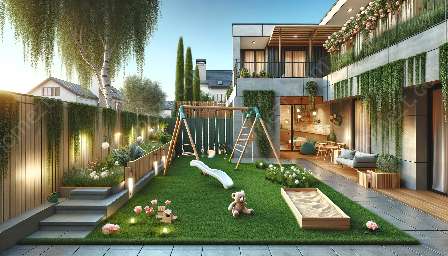Shade structures play a critical role in enhancing the functionality and aesthetics of outdoor play areas and nursery/playroom settings. They provide protection from the sun's harmful UV rays, create comfortable outdoor spaces, and contribute to children's well-being and overall experience.
The Importance of Shade Structures in Outdoor Play Areas
When designing outdoor play areas, it's essential to incorporate shade structures to mitigate the risks associated with prolonged sun exposure. Children spend considerable time engaging in outdoor activities, and without proper shading, they may be vulnerable to heat-related illnesses and sunburn. Additionally, exposure to UV rays can increase the risk of skin cancer in the long run. Therefore, integrating shade structures is crucial for promoting a safe and healthy play environment.
Benefits of Shade Structures
1. UV Protection: Shade structures offer effective protection against harmful UV rays, reducing the risk of sunburn and long-term skin damage.
2. Temperature Regulation: By providing shade, these structures help to maintain a comfortable temperature, allowing children to enjoy outdoor activities without being exposed to excessive heat.
3. Extended Playtime: With shade structures in place, children can continue playing outdoors for longer periods, as they are shielded from the direct sun.
Types of Shade Structures
There are various types of shade structures that can be implemented in outdoor play areas and nursery/playroom settings, each offering unique characteristics and benefits:
1. Sail Shades:
These are versatile and visually appealing shade structures that can be customized to fit the specific layout and design of the outdoor space. They come in a range of colors and sizes, adding a vibrant touch to the play area.
2. Pergolas:
Pergolas provide a more permanent and architectural shading solution. They can be adorned with climbing plants to create a natural, inviting atmosphere while offering effective shade.
3. Canopies:
Canopies are practical and easily adaptable shade structures, available in various shapes and sizes. They are often used to cover specific play equipment or designated play zones within the outdoor area.
Design Considerations
When selecting shade structures for outdoor play areas, several factors should be taken into account:
1. Size and Coverage: Determine the size of the outdoor area that requires shading and ensure adequate coverage to accommodate multiple activities and play equipment.
2. Durability: Opt for materials that are durable and weather-resistant to withstand outdoor elements and ensure the longevity of the shade structure.
3. Aesthetics: Consider the visual appeal of the shade structure and how it complements the overall design of the play area, creating an inviting and harmonious environment for children.
Shade Structures in Nursery/Playroom Settings
Shade structures are equally important in nursery and playroom settings, as they extend the learning and recreational experiences to the outdoors while offering sun protection and comfort. By integrating shade structures, indoor and outdoor spaces can seamlessly connect, promoting a holistic approach to child development.
Enhancing Outdoor Learning:
Shaded outdoor areas provide opportunities for educational and sensory activities, allowing children to explore nature, engage in creative play, and develop their motor skills in a safe and protected environment.
Cool and Comfortable Environment:
With the right shade structures in place, nursery and playroom settings can offer comfortable outdoor spaces for children to enjoy fresh air and outdoor play while staying protected from excessive sun exposure.
Conclusion
Shade structures are indispensable elements in outdoor play areas and nursery/playroom settings, enhancing the overall experience for children and creating safe, inviting environments. By carefully considering the benefits, types, and design considerations of shade structures, architects, designers, and caregivers can optimize the functionality and aesthetics of these spaces, ultimately promoting the well-being and development of young children.


